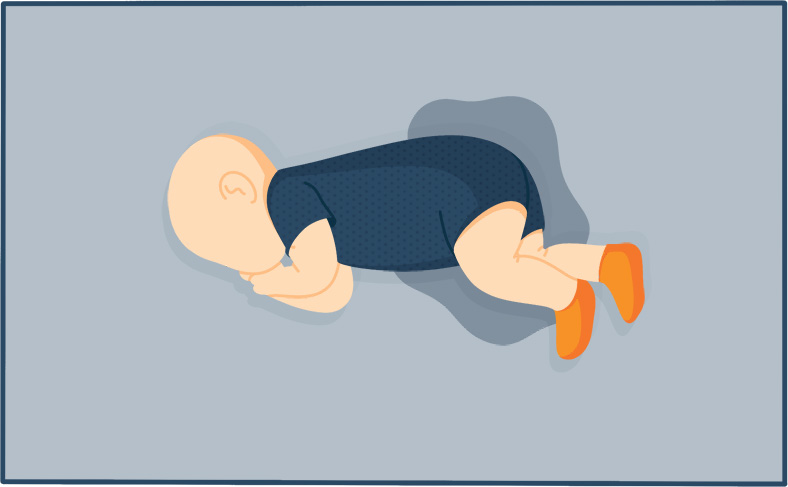Clean Your Mattress with a Vacuum
With a vacuum cleaner, you can eliminate dust mites, dust, pet dander, and other pollutants from the surface of your mattress. Before vacuuming your mattress, remove the sheets, pillows, topper, and all other coverings. Then, powder the mattress with baking soda and leave it on for 12 to 24 hours. The baking soda should absorb moisture and odors trapped within the top layer of the bed.
After the baking soda has sat for long enough, slowly vacuum every surface of the bed. If possible, use a handheld vacuum with a small brush attachment. The brush should work to loosen dirt and debris from the crevices of the mattress, making it easier for the vacuum to suck it up.
Make a Homemade Memory Foam Cleaning Solution
After vacuuming the dirt from your bed’s surface, the next step is preparing to remove stains from your memory foam mattress. You will need a cleaning solution for this job, but most store-bought cleaning solutions contain harmful and strong-smelling chemicals you should avoid.
Instead of buying a harsh cleaning solution, we recommend you make your own by mixing some dishwashing soap, fabric cleaner, or a mild detergent with water. Do this by diluting one part of your preferred cleaner with two parts of warm water. Pour your new cleaning solution into a spray bottle for easy application.
Get Stains Out of Your Memory Foam Mattress
The way you remove stains from a memory foam mattress will differ from how you clean a regular mattress. Memory foam is highly absorbent, which makes it hard to eliminate stains. Read on as we discuss how to remove specific types of stains from memory foam mattresses.
Dried Stains
The best way to clean a dried stain is to attack it as soon as you discover it. While it might not be fresh, the sooner you address a stain the better. First, remove your mattress cover and machine-wash the stained cover in cold water with regular detergent, unless the manufacturer recommends otherwise.
Keep in mind that not every mattress cover is made to be removed, and removing it may violate your warranty.
If the stain reaches the foam, grab the spray bottle with the cleaning solution you made earlier. Spray the stained spot well and gently scrub with a clean, damp cloth. Once the stain comes out, gently wipe away the soapy residue with another moist rag, then dry immediately by pressing a clean, dry cloth into the wet spot. Next, place the bed under direct sunlight or point a fan at it to speed up the drying process.
Severe Stains
For severe stains, like urine or vomit, you’ll need to mix a new, odor-eliminating cleaning solution by diluting one part white vinegar in three parts warm water.
Remove the mattress cover to clean it in the washer. Soak a clean cloth in the vinegar solution, wring out any excess liquid, and use it to penetrate and gently scrub the fresh stain.
After removing the smell and stain, use a clean, moist cloth followed by a dry cloth to absorb the solution, then place the mattress under a fan or the sun to completely dry it.
Liquid Stain
For dark-colored liquids like wine or coffee, you might need a stain remover. First, stop the stain from penetrating the mattress by using disposable towels to absorb as much of the liquid as possible.
After the towels absorb the moisture, mist the stained area with the diluted white vinegar solution. Let it sit for a minute before wiping it off with clean paper towels and repeat until the stain is lifted.
To remove odors, pour some baking soda on the wet spot and leave it for eight to ten hours. The baking soda should absorb any leftover moisture or odors, and you can vacuum up the baking soda after it has dried.
Dry Your Memory Foam Mattress
Since memory foam is so absorbent, any moisture trapped within the mattress can create a breeding ground for mold, viruses, bacteria, and odors.
The most effective way to dry a memory foam bed is to take it outside, where it can get lots of sunlight and air. If that’s not an option, place the mattress in a well-ventilated room where it can air dry quickly. Speed up the indoor drying process by directing a fan at the mattress or using a hairdryer on low heat.
Keep Your Memory Foam Mattress Clean
Now that you know how to clean a foam mattress, let’s look at how to stop it from getting dirty. All you have to do is place a mattress protector or memory foam mattress topper over the bed.
A moisture-proof mattress protector will cover the bed on all sides and stop sweat, stains, dirt, and even bugs from reaching the mattress. However, even if you use a mattress protector, you should still vacuum and air dry your bed at least every six months.
Benefits of Keeping Your Mattress Clean
Gets Rid of Dust Mites
Keeping your mattress clean is helpful for preventing dust mites and other allergens. These microscopic pests can live in mattresses and other bedding items. Symptoms of a dust mite allergy may include sneezing, a runny nose, itchy or red eyes, nasal congestion, and coughing. Dust mites can also trigger asthma attacks. Therefore, maintaining a clean bed is especially important for those with allergies and asthma.
Read More: How to Destroy Dust Mites in your Mattress
Eliminates Odors
Regular mattress cleanings are helpful for eliminating odors. Over time, a foam mattress may develop odors, and bad smells resulting from accidents or spills could become more potent if not treated. In addition to managing stains as they happen, periodic cleanings will keep a bed smelling fresh.
Extends the Mattress Lifespan
Maintaining a clean mattress can extend its lifespan. Most foam mattresses are usable for seven to ten years, but if the bed isn’t properly cared for, this could shorten this timeline. As a result, consumers end up getting less value for their investment and have to purchase a new mattress sooner than they should.
Read More: How Long Do Mattresses Last?
Better Sleep
Disinfecting a mattress could lead to better sleep. For those with allergies and asthma, eliminating the presence of dust mites means you’re less likely to experience a reaction at bedtime, promoting more restful sleep. There’s also a psychological element to having a clean sleep space. Much like lying in fresh linens, knowing your mattress is clean could reduce stress and allow you to feel more organized, which may enhance your rest.
Learn more about best mattresses for allergies and asthma sufferers.
Maintenance Tips
If you want to maintain the durability, warranty, comfort, and appearance of your memory foam mattress, follow these tips:
- Flip the mattress at least every six months. Doing so will prevent parts of the mattress from wearing out faster than the rest.
- Use the mattress in a well-ventilated room that gets lots of sunlight. The fresh air and sun’s rays will prevent moisture buildup and keep the mattress smelling fresh.
- Wash or change the sheets at least once a week. If the bed has a removable cover, you should also wash it weekly.
When Is It Time to Call Professionals?
You should call the professionals to clean your memory foam mattress if the cleaning tips we’ve provided above don’t work. You will also need professional cleaning if your bed has a bug infestation. Professional cleaners know how to deep-clean a memory foam mattress to remove any stains or organisms that may be compromising your bed’s safety and comfort.
However, before hiring a professional mattress cleaner, verify that the company you choose uses only safe, eco-friendly products and that it has experience cleaning your specific type of memory foam mattress.
Looking for more information? Learn how to deep clean your mattress.
When is a Mattress Beyond Cleaning?
Sometimes a mattress reaches the point when it’s beyond cleaning. If you notice that even professional cleanings aren’t removing stains or allergens, then it’s time to invest in a new memory foam mattress. The upside is that you can take this opportunity to find a bed that best fits your needs and sleep style, particularly if you’ve experienced physical or environmental changes that a new mattress can accommodate. Many mattress companies offer deals on beds throughout the year, with extra savings around holidays like Independence Day, Labor Day, Black Friday, President’s Day, and Memorial Day.
Frequently Asked Questions
How do I get a sweat smell out of a memory foam mattress?
You can remove sweat odors from your memory foam mattress by lightly spraying it with the white vinegar and water solution we described above for bodily fluid stain removal. After spraying the bed, place it outside in the sun or in a well-ventilated room to dry.
You might also deodorize your mattress by sprinkling baking soda and letting it sit on your mattress for at least 12 hours before vacuuming it off.
Can I steam clean a memory foam mattress?
No, you should not steam clean your memory foam mattress. Steam cleaning requires using liquid in the form of steam to wash the memory foam. Saturating your dense memory foam mattress could leave it soaked and nearly impossible to dry. If your memory foam stays thoroughly wet for more than a few days, the climate conditions can irreparably damage it. Saturated memory foam will acquire an odor and will likely develop mold, bacteria, or mildew growth.
Can I use a shampooer on my mattress?
Shampooing a memory foam mattress is just as problematic as steam cleaning because, after shampooing the mattress, you will need a lot of water to rinse out all of the soap. In the process, your mattress will become saturated with soapy water, and a soaked memory foam mattress will develop the problems we described above, eventually becoming unusable.
Conclusion
We hope this comprehensive guide has helped answer your questions about how to wash a memory foam mattress. Please note that while cleaning your mattress is key to maintaining its comfort and safety, cleaning it the wrong way can cause more harm than good and possibly ruin your mattress.
The takeaways we want to leave with you are to:
- Never saturate your mattress with water.
- Never use harsh chemicals, such as bleach or hydrogen peroxide, as a mattress cleaning solution. Powerful cleaning solutions can deteriorate, discolor, and damage memory foam – not to mention they can leave behind troublesome smells.
- Always protect your memory foam by covering it with a moisture-resistant mattress protector.
Jill Zwarensteyn
Editor
About Author
Jill Zwarensteyn is the Editor for Sleep Advisor and a Certified Sleep Science Coach. She is enthusiastic about providing helpful and engaging information on all things sleep and wellness.
Combination Sleeper






